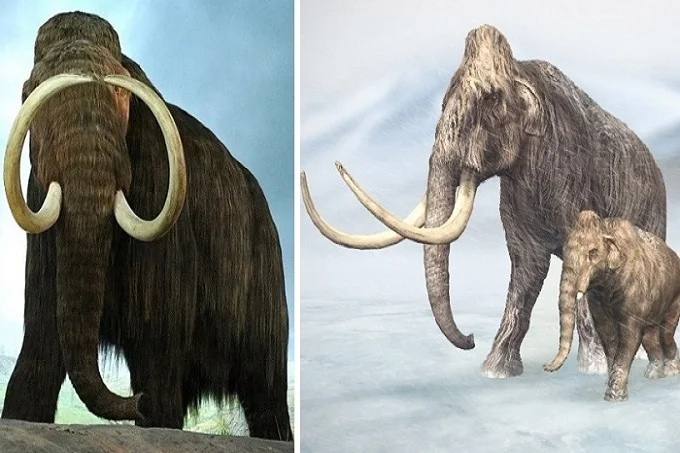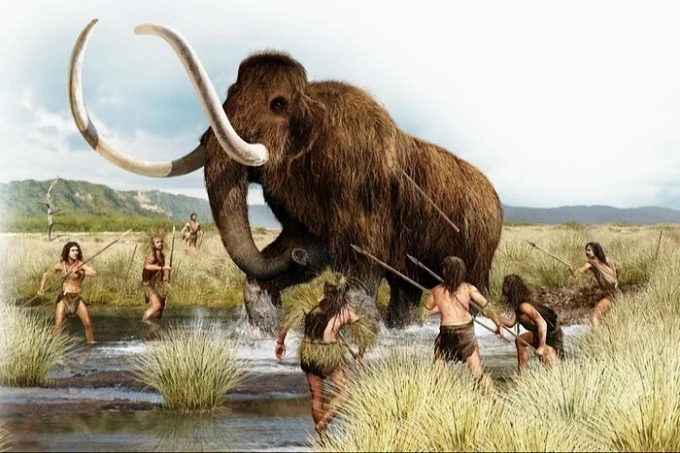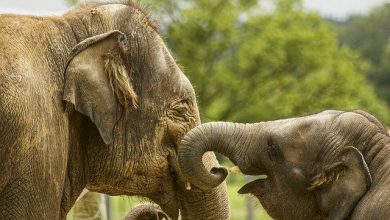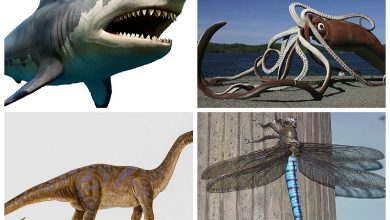Why did the last mammoths of Wrangel Island die out

Wrangel Island is an outlier. The great bulk of woolly mammoths died off about 10,500 years ago, towards the ending of the last ice age. However, due to increasing sea levels, a colony of woolly mammoths were stranded on Wrangel Island and remained there until their extinction some 3,700 years ago.
The history of the Earth knows several major extinctions of living organisms. Most of them were caused by natural phenomena or cosmic catastrophes. Concerning the most recent animal extinctions, then the “protagonist” is considered to be a man. But is this so, and is it only people guilty of the extinction of all species of animals since the last ice age? Let’s try to figure it out.
The largest mammals of the Ice Age
When it comes to the last ice age, which ended on the planet about 13 thousand years ago, the largest mammals of that time were woolly mammoths (Mammuthus primigenius). These distant relatives of modern elephants differed from their congeners by their thick woolen body cover, massive tusks, and a large fat hump.
Even though the size of mammoths was not much larger than the dimensions of modern Asian elephants (the maximum “growth” of Mammuthus primigenius was 3.5 meters), the weight of woolly giants was much more impressive than many proboscides – up to 8 tons. About 10.5 thousand years ago, almost all of these mammals became extinct. And only two small isolated groups managed to live for several more millennia.
Climate or human?
Who became the main reason for the extinction of mammoths: abrupt climate changes or vigorous human activity? Scientists are still arguing about this. Most researchers are inclined to believe that the main “killer” of woolly proboscis was sudden significant warming, but some scientists believe that people are also involved in the extinction of this species of large mammals.

But, as we mentioned earlier, not all populations of woolly mammoths died in the same period. Two relatively small groups of these giants – on Wrangel Island in the Arctic Ocean and on St. Paul’s Island in the Bering Sea – have outlived their relatives.
It is worth noting that these land areas became islands just after the climate warmed because due to the active melting of glaciers, the level of the World Ocean has risen significantly, so the animals remaining on these islands found themselves in natural isolation. Among them were woolly mammoths.
The last two populations of giants
Thus, about 6 thousand years ago, two populations of woolly mammoths still continued to live on Earth. The first tragic fate befell the giants from the island of St. Paul. The researchers found that about 5.6 thousand years ago, this population became completely extinct. Scientists believe that the reason for this was a sharp decrease in the supply of fresh water on the island.
As for another population of woolly mammoths that lived on Wrangel Island, these animals were lucky to live much longer. The last giant died here about 4 thousand years ago. This means that prehistoric woolly mammoths lived on the planet after the Egyptian pyramids were built.
Research by geneticists
Back in 2017, a group of genetic scientists who were studying the remains of woolly mammoths from Wrangel Island, which were 4.3 thousand years old, compared their genome with the DNA of a mammoth from the continent that lived about 45 thousand years ago. As a result of the tests, the experts discovered the presence of many genetic mutations in the island animals, while in the earlier “continental” species, nothing of the kind was found in the genome.

Scientists have found that the cause of such gene mutations was close inbreeding of animals, or inbreeding correctly called in scientific language. The population of mammoths on Wrangel Island was so small that “blood relatives” had to mate with each other over the years. At the same time, changes in the genome of subsequent generations became truly deadly.
Not extinct, but degenerated
Thus, we can say that the population of woolly mammoths on Wrangel Island did not become extinct but rather degenerated due to gene mutations caused by inbreeding or by crossing animals related to each other. Scientists have found that the last generation of the island Mammuthus primigenius has completely lost its sense of smell due to gene mutations. At the same time, it is theoretically quite possible that if the island mammoths had a large number, they could well survive all climatic changes, adapt to new conditions, and even survive today.
Although in this case, one more key threat would remain for animals – humans. Most likely, even if mammoths from Wrangel Island were not killed by gene mutations or global warming, their fate would have been decided by homo sapiens. One way or another, the extinction of these giants was not so much a matter of circumstances as it was a matter of time.
Modern genetic scientists may be able to bring back to life the extinct proboscis of the Ice Age. After all, researchers have biological materials for such experiments.




